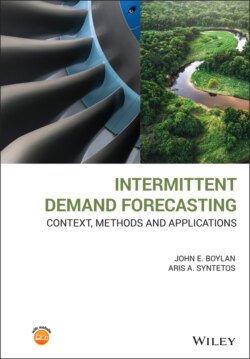Читать книгу Intermittent Demand Forecasting - John E. Boylan - Страница 40
2.3 Should an Item Be Stocked at All?
ОглавлениеA considerable amount of effort is expended by organisations to optimise inventory levels. This is expected, if we consider the huge inventory investments made in industry. Consider, for example, a car manufacturer investing £10 million in inventories of service parts to sustain their after‐sales operations in Europe. A mere 5% reduction of their stock levels translates automatically to £500 000 savings that may be invested in other business areas, or account towards an increase in their profit margin. There are two ways of achieving such savings: (i) ceasing to replenish stock for some items; (ii) continuing to replenish stock for other items but reducing the quantities held. Sometimes, an organisation may become preoccupied with the second option, drawing their attention away from the equally important problem, for SKUs with intermittent demand, of whether the item should be kept in stock at all. The decision to stop replenishing an item does not necessarily coincide with the decision to write off stock from the accounts (Technical Note 2.2).
Of course, management of spare parts is often subject to very specific contractual agreements, such as the obligation to service a piece of equipment by carrying items in stock for an agreed length of time. In these cases, ceasing to replenish an item is obviously not an option. Similarly, the life cycle phase of a product or a service part often dictates inventory decisions beyond cost optimisation. For example, even if it is potentially cost‐optimal not to stock an item in the introductory phase of its life cycle, high service requirements may result in always keeping some stock to satisfy demand.
Moreover, it is important to note that service levels are often targeted and measured on an ‘order’ rather than individual SKU basis. An order consists of a number of units requested for a number of items, and some organisations target the percentage of orders (rather than items) completely satisfied directly from stock on hand. (This is the ‘order fill rate’, which is further discussed in Chapter 3.) In this case, a non‐stock decision, taken on the basis of individual SKU requirements only, may be reversed based on collective considerations.
